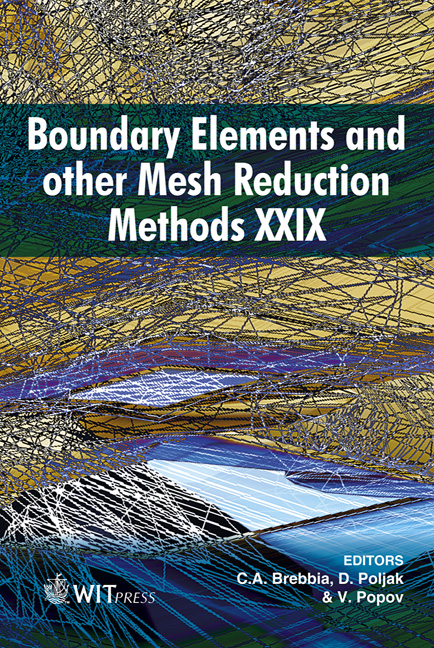DRM-MD Approach For Bound Electron States In Semiconductor Nano-wires
Price
Free (open access)
Transaction
Volume
44
Pages
10
Published
2007
Size
883 kb
Paper DOI
10.2495/BE070121
Copyright
WIT Press
Author(s)
R. Gospavic, V. Popov & G. Todorovic
Abstract
Using the boundary element dual reciprocity method-multi domain (DRM-MD), bound electron states and the corresponding wave functions in semiconductor quantum wires embedded in a matrix were considered. The single circular and rectangular as well as the two near circular quantum wires were analysed. In the case of two coupled quantum wires, the dependence of the resulting wave function and eigenenergies as a function of the distance between wires was calculated. The DRM-MD gave a linear electron state model and the developed numerical approach accurately captured the symmetry breaking and splitting of the degenerated energy states due to the presence of additional wire. According to the symmetry of the structures a suitable mesh reduction was employed and different modes were considered separately. For a case of hetero structures, domain decomposition was used. Keywords: dual-reciprocity-method, bound states, wave function, quantum wire. 1 Introduction The semiconductor nanostructures due to their unique physical properties have wide range of potential applications in electronic and optoelectronic devices [1– 5]. Latest advances in fabrication technology of semiconductors make it possible to obtain nanostructures in a controllable way and with a wide range of geometries and shapes [6–8], which resulted in a tremendous increase of research interests in nanotechnology and nanostructures in recent years. As the dimensions of these devices approach nano-scales, quantum effects become significant and quantum mechanical treatment of the problem is
Keywords
dual-reciprocity-method, bound states, wave function, quantum wire.





